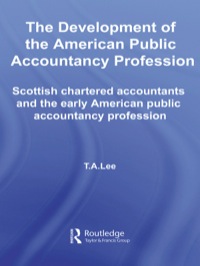Question
Company A sells on terms of 2/10, net 30. Its financial statements over the last three years are as follows. Please use the ratios discussed

Company A sells on terms of 2/10, net 30. Its financial statements over the last three years are as follows. Please use the ratios discussed in Chapter 03, analyze the companys financial condition and performance over the last three years. Are there any problems?
Liquidity ratios ability to pay bills in the short run
Current ratio = current assets / current liabilities Quick ratio = (current assets inventory) / current liabilities Cash ratio = cash / current labilities
Net working capital to total assets = NWC / total assets Interval measure = current assets / average daily operating costs
Financial leverage ratios ability to meet long-term obligations Total debt ratio = (total assets total equity) / total assets Debt-equity ratio = (total assets total equity) / total equity Equity multiplier = total assets / total equity = 1+debt/equity ratio Long-term debt ratio = long-term debt / (long-term debt + total equity) Times interest earned = EBIT / interest Cash coverage = (EBIT + depreciation ) / interest |
Asset management ratios efficiency of asset use Inventory Turnover = COGS / inventory (Days Sales in Inventory) Receivables Turnover = sales / AR (Days Sales in Receivables) NWC turnover = sales / (current assets current liabilities) Fixed asset turnover = sales / net fixed assets Total asset turnover = sales / total assets Comparing a flow item with a stock item... |
Profitability ratio efficiency of operations and how that translate to the bottom line Profit margin = net income / sales Return on asset = net income / total assets Return on equity = net income / total equity |
Market value ratios how are its shares valued in the stock market
Price-earnings ratio = price per share / earning per share
Price-sales ratio = price per share / sales per share
Market-to-book ratio = market value per share / book value per share

Company A sells on terms of 2/10, net 30. Its financial statements over the last three years are as follows. Please use the ratios discussed in Chapter 03, analyze the companys financial condition and performance over the last three years. Are there any problems?
Ratios used in chapter 3 :
Liquidity ratios ability to pay bills in the short run
Current ratio = current assets / current liabilities Quick ratio = (current assets inventory) / current liabilities Cash ratio = cash / current labilities
- Net working capital to total assets = NWC / total assets Interval measure = current assets / average daily operating costs
Financial leverage ratios ability to meet long-term obligations
Total debt ratio = (total assets total equity) / total assets Debt-equity ratio = (total assets total equity) / total equity Equity multiplier = total assets / total equity = 1+debt/equity ratio Long-term debt ratio = long-term debt / (long-term debt + total equity)
- Times interest earned = EBIT / interest Cash coverage = (EBIT + depreciation ) / interest
Asset management ratios efficiency of asset use
Inventory Turnover = COGS / inventory (Days Sales in Inventory) Receivables Turnover = sales / AR (Days Sales in Receivables) NWC turnover = sales / (current assets current liabilities) Fixed asset turnover = sales / net fixed assets Total asset turnover = sales / total assets
- Comparing a flow item with a stock item
Profitability ratio efficiency of operations and how that translate to the bottom line
Profit margin = net income / sales
- Return on asset = net income / total assets Return on equity = net income / total equity
Market value ratios how are its shares valued in the stock market
Price-earnings ratio = price per share / earning per share
Price-sales ratio = price per share / sales per share
Market-to-book ratio = market value per share / book value per share

Step by Step Solution
There are 3 Steps involved in it
Step: 1

Get Instant Access to Expert-Tailored Solutions
See step-by-step solutions with expert insights and AI powered tools for academic success
Step: 2

Step: 3

Ace Your Homework with AI
Get the answers you need in no time with our AI-driven, step-by-step assistance
Get Started


